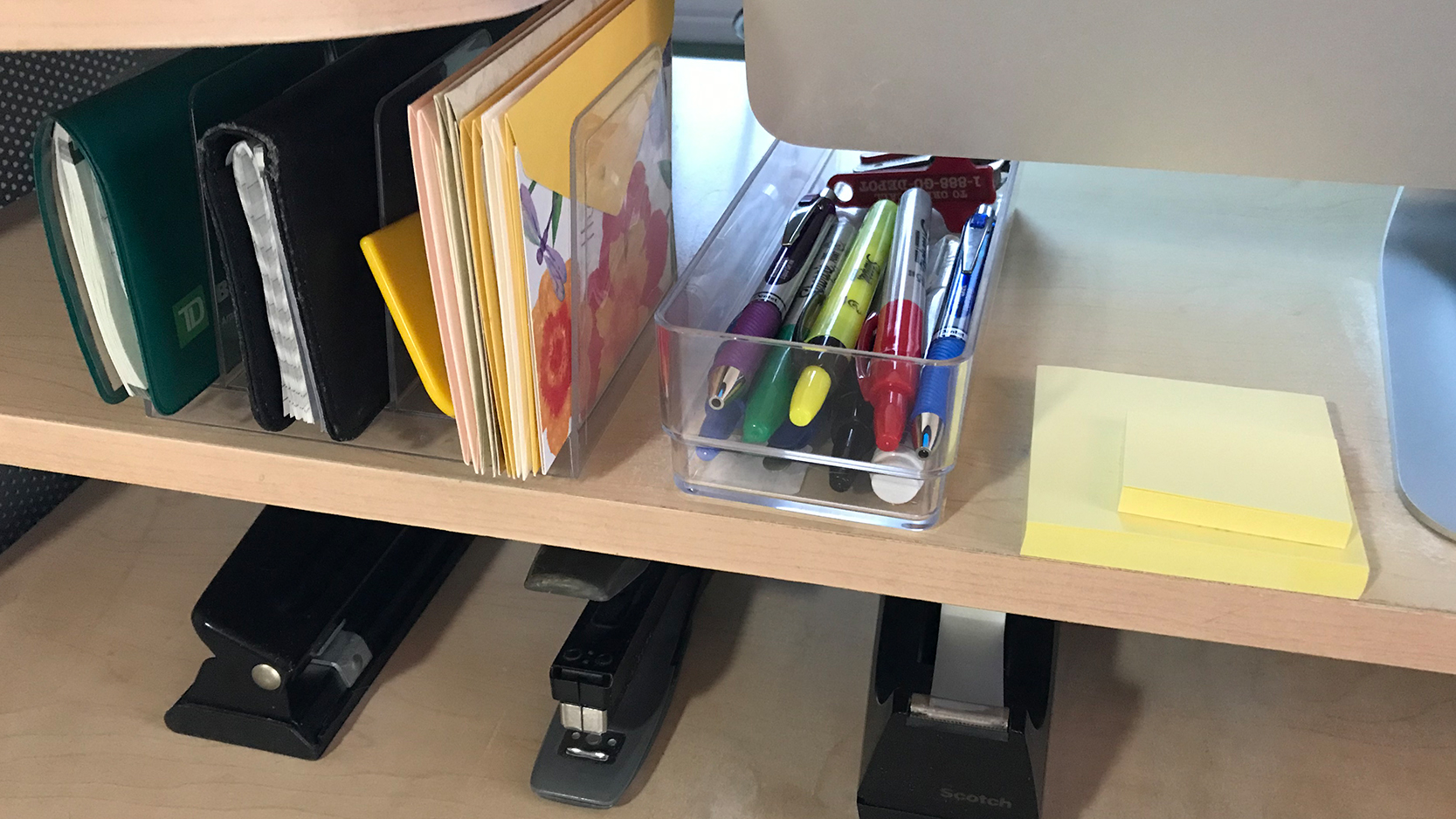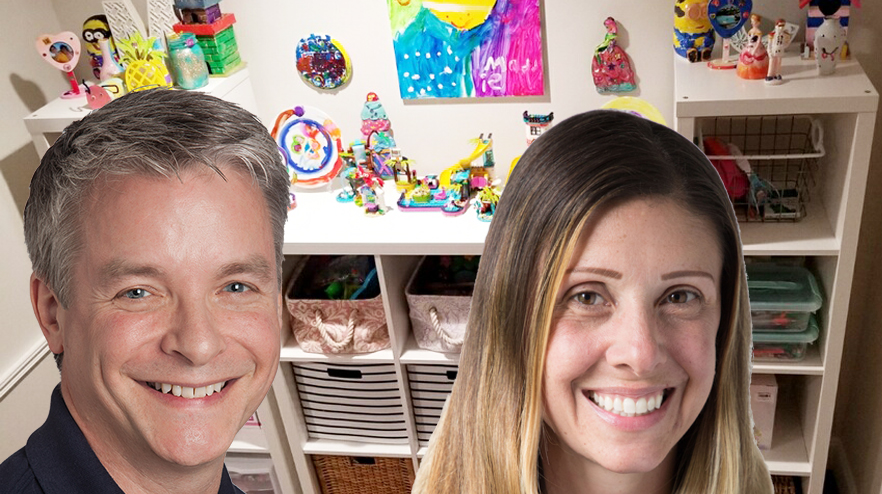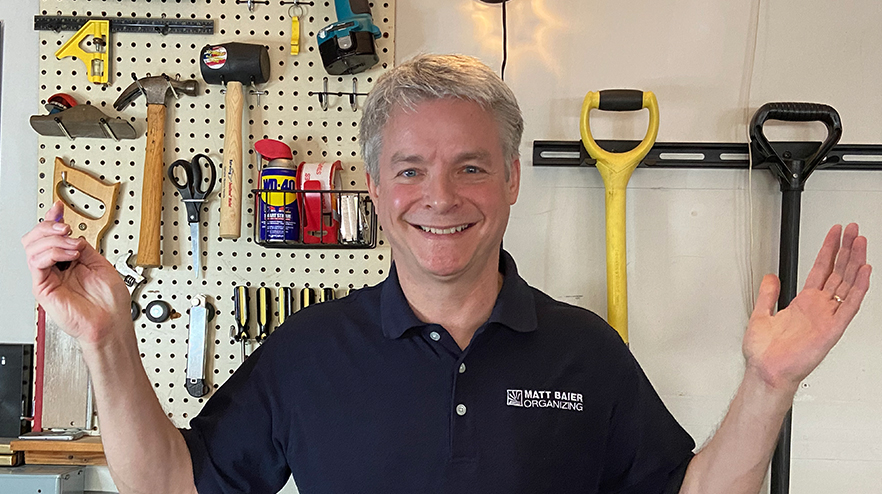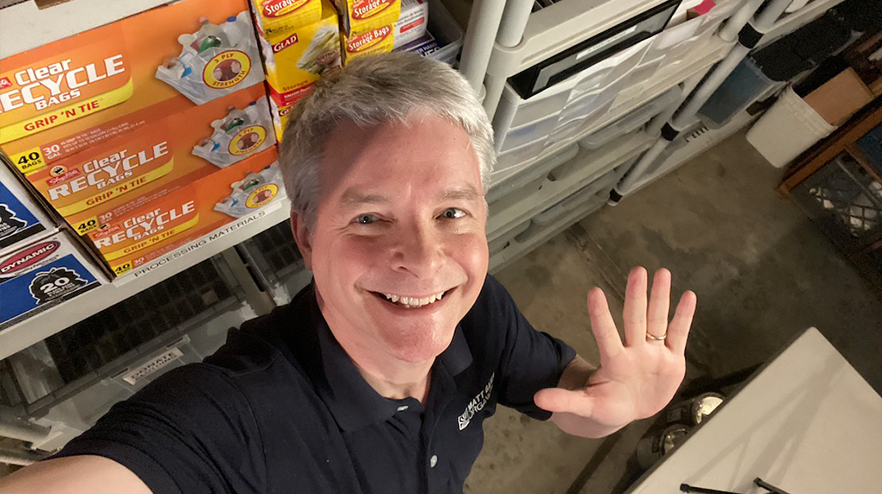Are your action items stored for action? Mostly when we think of storage, we think of things being stored away, in bins, cabinets, and on shelves. Do the same storage rules apply to action items? Of course not! Here are some tips for storing action items.
1. Showroom vs Stockroom
To start with, it make sense to clarify the difference between your showroom and stockroom spaces in your home. The “stockrooms” in your home tend to be the big storage areas- garage, basement, attic. There, you use vertical space more. There is more inventory and less activity. The “showrooms,” on the other hand, are the living spaces. They are more open, well-lit, and inviting. There is less inventory, but more activity. The highest activity areas should have the least amount of stuff.
2. Frequency merits facility
Understanding showroom vs. stockroom leads to another principal: frequency merits facility. The more often you use something, the easier it should be to access. Making something as easy to use as possible requires keeping a minimum number of items from each category. In the photo above I chose an example from my desk. I chose this, because the desk in my home office is the most active area in my house. I don’t need a back up supply of writing implements at my fingertips. I just need one each. Of course, it is important that I can trust that I can replace a spent pen within seconds. Just to be clear, you don’t need to go to your garage to replace a pen. A stockroom space can be a set of shelves inside your home office.
3. Within-reach creates space
Little subtractions, like keeping single pens handy, add up. Since a clear work surface is your number one organizing tool, you will want to have a minimal number of items around its perimeter. It’s a small perimeter, because you will want to keep these items within reach. The fewer there are, the more this is possible. As a side benefit, when there is less to look at, there is less to distract.
4. More space for actionable items
When you fully minimize the items at your fingertips, you might find more space for additional actionable items. For example, I recently realized that I had space for a few thank-you notes, within reach. This extra space gave me an important advantage. I could now facilitate a task that had been cumbersome: writing thank you notes. Before, I had to get up from my desk and access a box of cards on the shelf. Granted, that’s not a lot of steps, but when they compete with staring at a computer screen, they lose.
Writing thank you notes, then becomes a task I put off, when it is actually a very important one. Now there is no barrier to writing a thank you note. I can do it as the need arises. Notes and envelopes are located just below the computer monitor, which shows me the correct address. They are right next to my favorite pen. Action is possible because I just have a minimum amount of actionable items at my fingertips.
5. Avoid containers
I recently wrote a blog called When Empty is Golden. Among the assertions I made was, “sometimes the best container is no container at all.” This is particularly true for action items. There are several reasons for this. First, action items need to be visible and compelling. Hiding items in containers discourages action. Second, action items should be as accessible as possible. Containers can be a physical barrier. Finally, a container can encourage you to fill it with more than you need. Having no container, forces you to keep things to an actionable minimum. In the photo above, the only container is clear and uncovered. The cards have just enough structure to keep them upright and separate, but they are in the open.
Bottom line, storing for action should be completely different than storing for quantity. Each category should be minimal, visible, accessible, and, where possible, not contained. Minimal is perhaps the most important element to master. Quantity distracts. Minimal motivates.
If motivation from minimal sounds good, but you just don’t know how to get there, contact us. We’d be happy to help.
Please Share With Your Community
Related Posts
Testimonials
What some of our clients are saying
Imagine An Organized Home
















